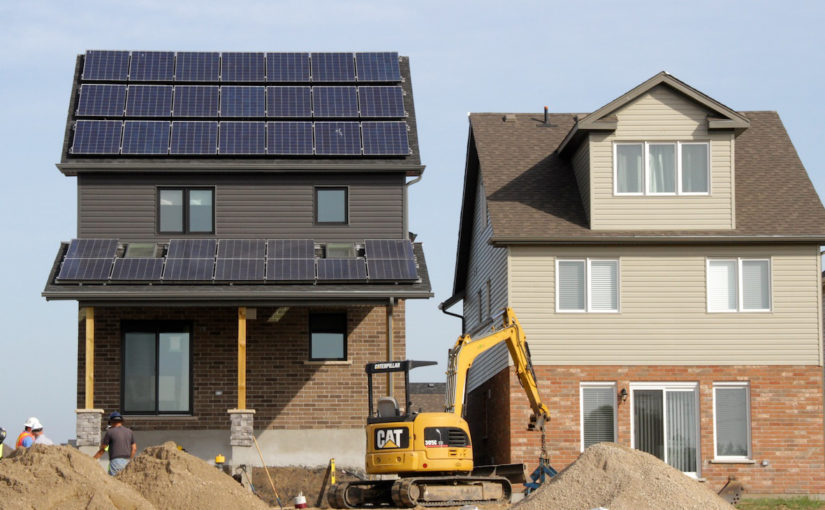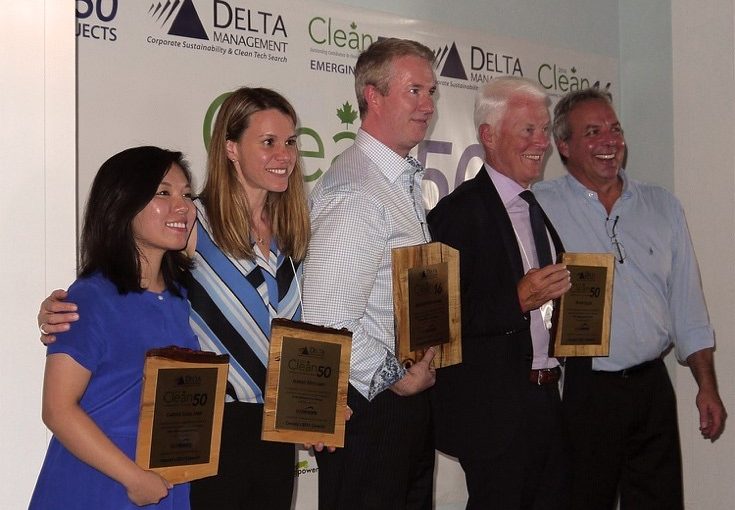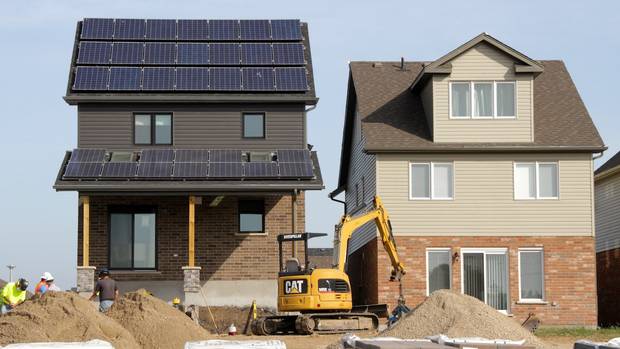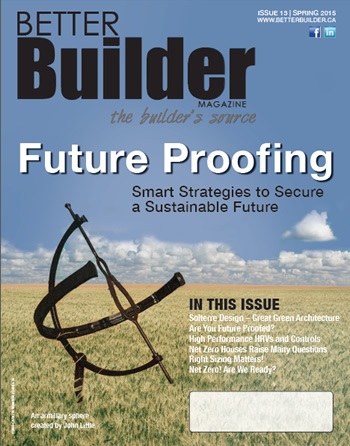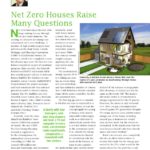Candice Luck honoured as one of Canada’s 2017 Clean50
for driving net zero housing innovation
TORONTO, SEPTEMBER 26, 2016—buildABILITY Corporation is proud to announce that our Director of Strategy & Programs, Ms. Candice Luck, is the recipient of Canada’s 2017 Clean50 award for her efforts in net zero energy housing innovation and adoption. She is one of 50 honourees in Canada to receive this recognition for 2017.
At the young age of 30, Candice is the project leader on an over $4 million initiative that doubled the number of net zero energy homes built in Canada—homes that, over the course of the year, generate as much energy as the occupants consume. Her pivotal role in unifying a team of production builders, regional consultants, and product manufacturers made the construction of 26 net zero homes in five communities across Canada a reality. The project successfully demonstrated to homebuilders the feasibility of building net zero and paved the way for widespread acceptance and industry adoption of net zero energy housing. With a focus on clean energy and green building in the recent Canadian federal budget, the project has given builders across Canada the opportunity to witness and learn about net zero in their own communities.
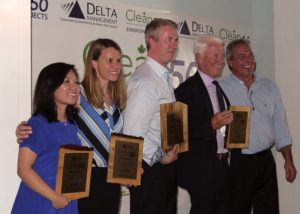
Left to Right: Candice Luck, buildABILITY Corporation; Jeanne Medland, KingSett Capital; Andrew Bowerbank, EllisDon Corporation; Philip Gillin, Sun Life Financial; Gavin Pitchford, Delta Management
Canada’s Clean50 is rooted in sustainability and fostering collaboration between all segments of Canadian life. Clean50 annually recognizes 50 leaders from 16 different categories who have done the most to advance the cause of sustainability and clean capitalism in Canada over the past 2 years. A Summit is hosted annually to give honourees the opportunity to build connections, share inspiration, and tackle common sustainability challenges.
“The Clean50 come from such a broad array of backgrounds, such that only a few individuals are able to be recognized within any given category. To receive a Clean50 award is truly indicative of both industry and personal leadership in the Building category,” said Gavin Pitchford, CEO, Delta Management Group. “Candice Luck was chosen after rigorous screening and research by Delta Management, with advice from internal researchers and external advisors, and was among honourees selected from an initial pool of over 500 well qualified nominees.”
This is a major accomplishment for Candice Luck as other 2017 Clean50 honourees include Ontario’s Minister of Environment and Climate Change – Glen Murray, Environmental Commissioner of Ontario – Dr. Dianne Saxe, Alberta’s Premier – Rachel Notley, Former President of Shell Canada – Lorraine Mitchelmore, CEO of NRStor – Annette Verschuren, CEO of ecobee – Stuart Lombard, CEO of Plug’n Drive – Cara Clairman, CEO of the Toronto and Region Conservation Authority, Brian Denney and fellow building category winner, Andrew Bowerbank of EllisDon Corporation.
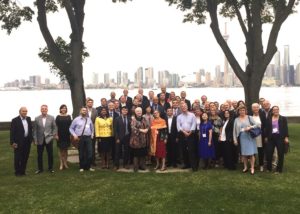
Canada’s 2017 Clean50 honourees pictured here with the Honourable Elizabeth Dowdeswell, Lieutenant Governor General of Ontario (centre) at the Clean50 Summit hosted in Toronto on September 22.
“I am honoured and humbled to receive the 2017 Clean50 award for my work in net zero housing innovation. I am very lucky to be surrounded by intelligent, creative and innovative people at buildABILITY who truly care about the buildings that house people,” says Candice Luck. “Net zero energy housing is an emerging innovation that will help shield consumers from rising energy costs while reducing greenhouse gas emissions and improving the home’s resiliency. This award signifies to me that we are on the right path as we strive for better. There is more work to be done to make net zero energy housing a reality for all Canadians.”
– 30 –
About buildABILITY Corporation:
buildABILITY is an innovation consulting firm for the homebuilding industry and strives to help build better homes for Canadians. With a deep understanding and expertise in housing, buildABILITY is able to act as a catalyst for change. buildABILITY has worked with builders, governments, manufacturers, utilities, and associations, facilitating the adoption of new technologies and processes, assisting with the adaption to new building requirements, and helping their clients change to become top competitors and leaders.
Media Contact:
Candice Luck
416-961-3487
candice@buildability.ca
About Delta Management Group and Canada’s Clean50:
Leading sustainability and clean tech search firm Delta Management Group in 2011 founded, and remains the steward of the Canada’s Clean50 awards, created to annually identify, recognize and connect 50 sustainability leaders from every sector of Canadian endeavor, in order to facilitate understanding, collaboration and innovation in the fight to keep climate change impacts below 1.5 degrees. Ancillary awards also recognize 10 Emerging Leaders and the Top 15 Sustainability Projects of the year.
Media Contact:
Gavin Pitchford
416-925-2005 x 2300
gpitchford@deltamanagement.com
For more information about Canada’s Clean50, please visit www.clean50.com
To read the original press release, please visit: http://www.newswire.ca/news-releases/candice-luck-honoured-as-one-of-canadas-2017-clean50-for-driving-net-zero-housing-innovation-594840761.html


